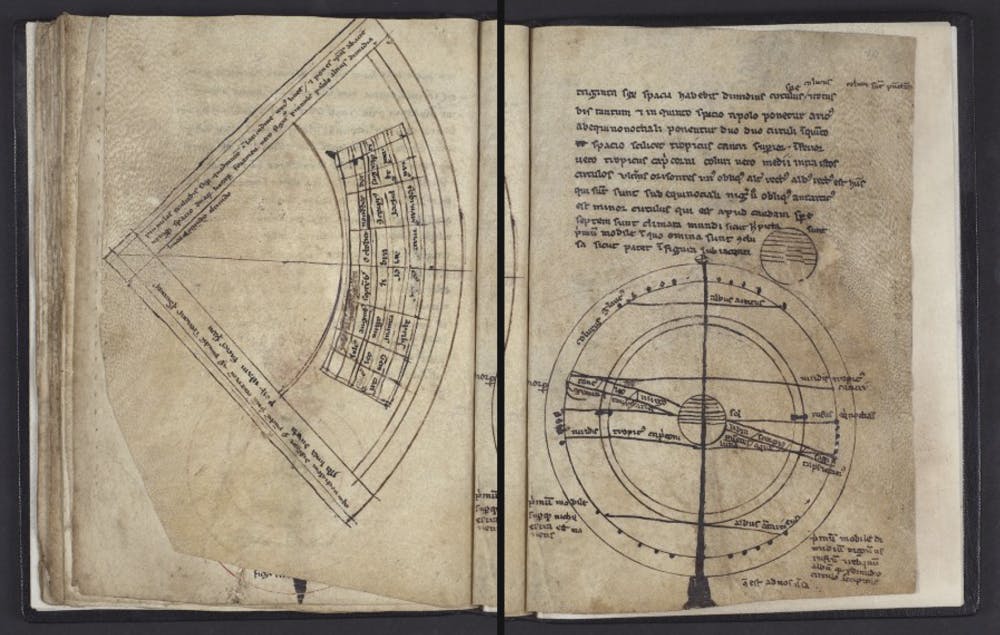Star Wars and the Middle Ages have more in common than meets the eye, according to a new video series from the Schoenberg Institute for Manuscript Studies at the University of Pennsylvania.
“Sacred Texts: Codices Far, Far Away” is a project centering on the way medieval culture influenced the Jedi manuscripts, a type of "codex," that are visible in the latest movie of the saga, “Star Wars: The Last Jedi.” The Schoenberg Institute's curator of Digital Research Services, Dot Porter, and assistant professor of English at Rhode Island College Brandon Hawk created the video series in order to increase interest in medievalism.
There are currently three videos in the series, all about five minutes long, which feature Hawk and Porter analyzing the Penn manuscripts in front of a green screen with Star Wars backgrounds. In total, the series has accumulated more than 1,800 views.
The manuscripts in "The Last Jedi" were particularly interesting to Hawk and Porter because Porter said no one has ever seen writing in the Star Wars universe, and Porter explained that manuscripts are written by hand and "look like a modern book" with pages and a cover.
When Porter saw manuscripts appear on a shelf while watching the 2017 film, her interest was sparked. “It was like, ‘This is the most amazing thing, that my two great loves are in the same room together.' I get to talk to them both at the same time,” Porter said.
Every video features a different manuscript from Schoenberg — dating from medieval times to the early 1900s — and explores how those documents may have informed the “Star Wars” manuscripts. The Schoenberg Institute has over 1,500 Western manuscripts and is located on the sixth floor of Van Pelt Library.
“When I first saw [the Star Wars manuscripts] I was thinking especially of astronomical scientific kinds of books from the medieval period,” Hawk said. “I was interested in the text in some ways and how it's obviously a non-Latin alphabet, and in episode three of our series we highlighted an Ethiopian manuscript that has similarities in the script.”
RELATED:
Meet the Manuscript Collective: a group of undergrads who explore Penn’s collection of rare texts
Penn Libraries will preserve records of Marian Anderson, 'symbol of hope' for black Americans
One manuscript that hails from 13th century Italy features diagrams of the movement of the sun, the earth, and the moon — striking Porter as similar to those found in Star Wars.
Medievalism and “Star Wars” are things that both Porter and Hawk are passionate about.
“In some ways we're doing this because we're fans of Star Wars and we really want to dig into the Star Wars universe,” Hawk said. “In other ways we're doing it because we love medieval studies and we want other people to love medieval studies too.”
The twin passions are what brought Hawk and Porter together, as they first met on “medieval twitter,” Porter said, where they started discussing a potential project and eventually met in person at a conference.
When Hawk traveled to Philadelphia to film the videos in a studio in Weigle Information Commons, they originally thought one video would be produced.
“But we ended up being in there for like three hours and I didn't want to cut anything,” Porter said.
Hawk and Porter are planning to upload more videos until the release of the next “Star Wars” film in December 2019, planning to film more segments with experts in both fields.
Though the videos are meant to show the comparison between Star Wars and medieval manuscripts, Hawk said the series serves a larger purpose.
“I hope that this video series shows people that these [manuscripts] are really cool and that they have a lot to offer — and that medieval studies is a really thriving field and has so much more to study,” Hawk said. “It would be great if more people saw these videos and then got interested in medieval studies, either as amateurs or as academics.”









